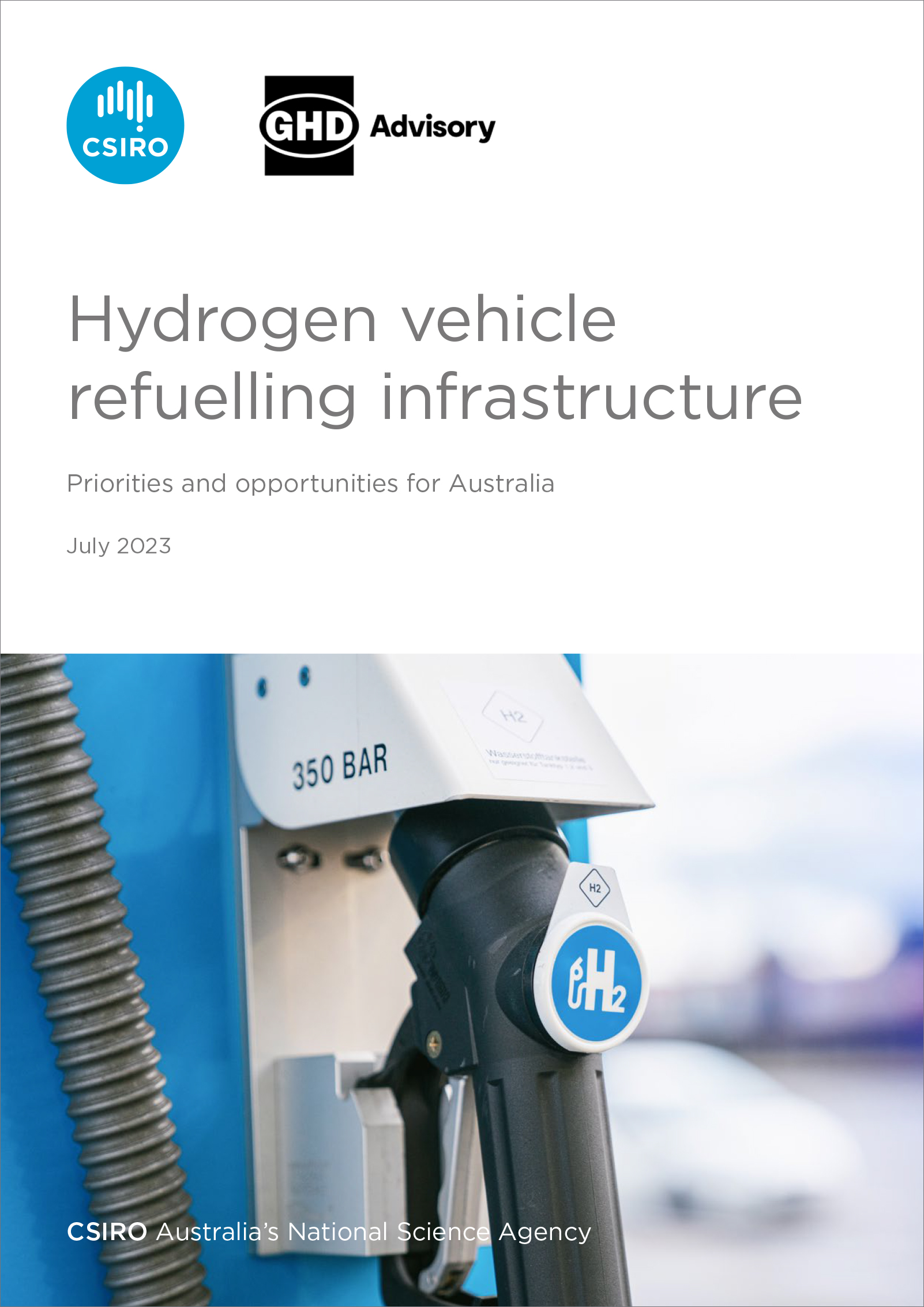 If Australia is to meet its Net Zero commitments, we need to urgently decarbonise our transport sector which currently accounts for 18.6% of our greenhouse gas emissions.
If Australia is to meet its Net Zero commitments, we need to urgently decarbonise our transport sector which currently accounts for 18.6% of our greenhouse gas emissions.
While electric vehicles will drive decarbonisation of road transport in Australia, hydrogen-powered vehicles are expected to play a significant role particularly with long-haul travel and freight transport, as they take less time to refuel and have a greater range between refuelling stops than battery electric vehicles.
The ‘Hydrogen vehicle refuelling infrastructure: priorities and opportunities for Australia’ report sets out the considerations for governments and industry to build out hydrogen refuelling infrastructure across the nation. It compares different hydrogen storage and dispensing options, and evaluates refuelling infrastructure options based on fuel demand and distance from the hydrogen source.
Key findings from the report include:
- While all Australian hydrogen refuelling stations currently have onsite hydrogen production, centralised offsite production and distribution of hydrogen is likely to be the dominant future model, due to cost efficiencies with scale and not needing to accommodate onsite production when selecting sites.
- Partnerships and consortia are a successful approach to building hydrogen vehicle refuelling infrastructure. In the more developed hydrogen economies in Europe, the US and Japan, businesses and government organisations are partnering in hydrogen infrastructure development projects to pool resources, and share costs and risk.
- Liquefaction, and transport and storage of liquid hydrogen to be dispensed as a gas, presents as an opportunity to greatly improve distribution and storage capacities. However, transport and storage of liquid hydrogen at low volumes is currently very expensive compared to compressed hydrogen.
- Transport of hydrogen directly to refuelling stations by dedicated pipeline will likely be difficult to justify, due to high capital intensity and relatively low demand of individual refuellers. There may be refuelling locations in industrial or port areas that are suitable for direct pipelines, due to proximity to the supply source or having pre-existing pipelines that can be repurposed.
Download the report
- Hydrogen Vehicle Refuelling Infrastructure: Priorities and opportunities for Australia – report
- Hydrogen Vehicle Refuelling Infrastructure: Priorities and opportunities for Australia – report (accessible text)
- Hydrogen Vehicle Refuelling Infrastructure: Priorities and opportunities for Australia – executive summary
- Hydrogen Vehicle Refuelling Infrastructure: Priorities and opportunities for Australia – executive summary (accessible text)
If Australia is to meet its Net Zero commitments, we need to urgently decarbonise our transport sector which currently accounts for 18.6% of our greenhouse gas emissions.
While electric vehicles will drive decarbonisation of road transport in Australia, hydrogen-powered vehicles are expected to play a significant role particularly with long-haul travel and freight transport, as they take less time to refuel and have a greater range between refuelling stops than battery electric vehicles.
The ‘Hydrogen vehicle refuelling infrastructure: priorities and opportunities for Australia’ report sets out the considerations for governments and industry to build out hydrogen refuelling infrastructure across the nation. It compares different hydrogen storage and dispensing options, and evaluates refuelling infrastructure options based on fuel demand and distance from the hydrogen source.
Key findings from the report include:
- While all Australian hydrogen refuelling stations currently have onsite hydrogen production, centralised offsite production and distribution of hydrogen is likely to be the dominant future model, due to cost efficiencies with scale and not needing to accommodate onsite production when selecting sites.
- Partnerships and consortia are a successful approach to building hydrogen vehicle refuelling infrastructure. In the more developed hydrogen economies in Europe, the US and Japan, businesses and government organisations are partnering in hydrogen infrastructure development projects to pool resources, and share costs and risk.
- Liquefaction, and transport and storage of liquid hydrogen to be dispensed as a gas, presents as an opportunity to greatly improve distribution and storage capacities. However, transport and storage of liquid hydrogen at low volumes is currently very expensive compared to compressed hydrogen.
- Transport of hydrogen directly to refuelling stations by dedicated pipeline will likely be difficult to justify, due to high capital intensity and relatively low demand of individual refuellers. There may be refuelling locations in industrial or port areas that are suitable for direct pipelines, due to proximity to the supply source or having pre-existing pipelines that can be repurposed.
Download the report
- Hydrogen Vehicle Refuelling Infrastructure: Priorities and opportunities for Australia – report PDF (6 MB)
- Hydrogen Vehicle Refuelling Infrastructure: Priorities and opportunities for Australia – report (accessible text) TXT (349 KB)
- Hydrogen Vehicle Refuelling Infrastructure: Priorities and opportunities for Australia – executive summary PDF (644 KB)
- Hydrogen Vehicle Refuelling Infrastructure: Priorities and opportunities for Australia – executive summary (accessible text) TXT (19 KB)
